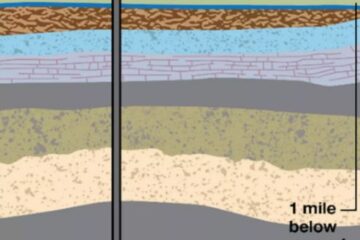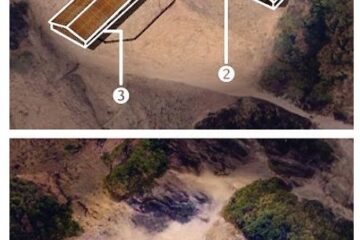Inmates in the line of fire
A force of about 3,800 state prisoners, including about 250 female inmates, is trained and ready to be mobilized to the front line
Source of this article, The Thousand Oaks Acorn, July 7, 2016

FACING INFERNOS—A force of about 3,800 state prisoners, including about 250 female inmates, assist in fighting wildfires in California. The nonviolent offenders are screened and trained in firefighting. Courtesy of California Department of Corrections and Rehabilitation
Ventura fire camp inmate Luiz Galvez was startled awake by shouting in the dorm room around 3 a.m. on a recent Thursday.
Still groggy, he slipped on his Nomex, a fire-resistant protective undergarment, put on the rest of his gear, stuffed his feet into boots and, barely awake, plodded outside to board a waiting bus.
An hour later, the 21-year-old Riverside man serving a three year sentence for robbery was within feet of 7-foot-high flames, working methodically alongside other fire camp inmates to cut a defensible line around the Sherpa fire in Santa Barbara.
“It’s like standing next to a bonfire,” said Galvez, an expert on the chain saw, who completed a four-week basic training course at the California Department of Forestry and Fire Protection’s Jamestown facility near Sonora.
More than 400 specially trained and physically screened inmates from fire camps throughout the state were brought in to help fight the Sherpa fire, which erupted around 3:30 p.m. June 15 and became the second major wildfire to break out in Southern California this summer.

THINGS ARE HEATING UP— Firefighters from the Ventura County Fire Department hike in to a brush fire burning near Mount Sinai cemetery on July 1 in Simi Valley. The department receives assistance from prison inmates trained to help the fire crews. MICHAEL COONS/Acorn Newspapers
The fire camps are run by the California Department of Corrections.
Working in 24-hour shifts, with 24-hour breaks in between, the inmate hand crews battled for more than a week to clear vegetation from perimeters around the fire’s shifting front lines.
On June 27, officials from the California Department of Forestry and Fire Service, or Cal Fire, declared the 7,800-acre fire fully contained.
But at least four other major wildfires that broke out after the Sherpa fire were still burning in Southern California, including the massive Erskine fire in Kern County, which had killed two people, scorched more than 45,400 acres and was 50 percent contained as of June 27.
“Unfortunately, it seems every year we break a new record for wildfires,” said Bill Sessa, spokesperson for the state corrections department’s fire camps program. “We’re already off and running on what looks to be a heavy fire year.”
For this fire season, which fire officials say will be made worse by five years of drought, a force of about 3,800 state prisoners, including about 250 female inmates, is trained and ready to be mobilized to the front lines, Sessa said.
Although the state’s 43 fire camps can accommodate up to 4,500 inmates, recent changes in state sentencing guidelines for nonviolent offenders reduced the number of inmates in the fire camp program slightly this year, Sessa said, but not enough to make a dent in the program’s overall effectiveness.
“Do we have enough inmates for this fire season? Absolutely,” he said.
Dressed in full gear and carrying backpacks that can weigh up to 50 pounds, the inmate hand crew members represent a key component in Cal Fire’s wildfire fighting strategy.
“They perform an extremely valuable function,” Sessa said. “They do the hand work in the backcountry that contains the fire and stops it from spreading. When you see news accounts that a fire has been contained, that means our crews have been able to get a ring around the fire.”
Once a wildfire is out, inmate crews are sent back in to help douse hot spots and anything still smoldering.
For the Sherpa fire, hundreds of inmates and their Cal Fire crew captains poured into a staging area at Cal Fire’s Camarillo Fire Center, Ventura Conservation Camp, which normally is the base camp for five inmate fire strike teams, each made up of about 17 to 18 prisoners.
“We fed them, showered them, bedded them down for the night,” said camp commander Lt. Derrick “Bo” Taylor of the state Department of Corrections and Rehabilitation, which runs the fire camp program in partnership with Cal Fire.
At least five inmates suffered heat-related illnesses in the Sherpa fire and had to be treated on site before being brought back to Camarillo to recuperate.
“It was 110 degrees on the line,” Taylor said.
To qualify for the fire camp program, volunteer inmates must meet strict guidelines. Prisoners convicted of arson, any sex offense or violent felonies are automatically excluded.
Only low level security offenders convicted of nonviolent crimes and with records of good behavior are considered, Sessa said.
Inmates also must pass a physical exam to be accepted on a fire strike crew. Those with restricting medical conditions such as asthma or a prosthetic limb can qualify for fire camp as cooks or support personnel for the hand crew members.
Fire camp inmates earn $2 a day, compared to the $1 a day prisoners can earn performing jobs in regular prison. When they’re out on the lines battling a wildfire, the inmates earn $2 an hour.
The extra money can help fire camp inmates get back on their feet once released or help them pay court-ordered restitution to their victims, Sessa said.
Apart from the better pay, fire camp inmates often say the experience turned their lives around.
“It gave me more ability to cope with others,” said Galvan, the father of a 1-year-old girl. “I’m able to work with others and know what it’s like to work on a team.”
Until he came to fire camp at Camarillo last year, inmate Randy Alvarez, 38, never had a real job, the Compton man said.
“ Here, I learned how to hold down a job, how to take instructions from the supervisor and follow orders, how to be patient,” the convicted domestic abuser said.
The program can also help inmates get out sooner by shaving time off their sentences. All state inmates can earn one day off of their sentence for each day of good behavior they earn, but fire camp inmates earn two days off their sentences for each day in camp.
“It is a rehabilitation program,” Sessa said. “It teaches life skills and discipline. Once the inmates are on the fire line, they learn very quickly that the discipline that we instill in them is critical to staying safe and keeping their crew mates safe.”



0 Comments